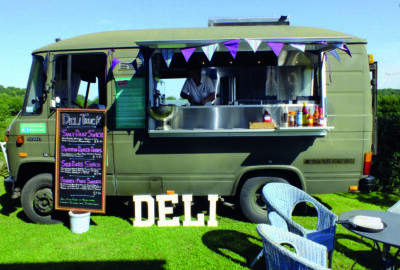Satisfying the needs of our younger generation
As schools break up for the holidays, activity centres, holiday destinations and entertainment venues will once again see an influx of visitors from families who will no doubt be seeking refreshments as a treat or day trip.
Catering for families can be quite complex, as children get older not only do their needs and tastes change but they also become more aware of their environment and are influenced by a broad spectrum of external factors. This can result in the provision of multiple menus and facilities to accommodate children from 0-12yrs of age, however when carefully considered, these complexities can be reduced to make catering for families more manageable while meeting the specific needs of each age group.
Babies and Toddlers
Parents with babies or toddlers are not only looking for venues with layouts that accommodate pushchairs and offer changing facilities, they also need to feel comfortable to breast feed or be able to warm milk bottles. As their babies grow and are weaned onto solid foods, there are opportunities for caterers to sell baby food, whether freshly prepared or in pre-packed pouches from brands.
Staff training is often overlooked when catering for young families. Often, the small things make the biggest impact so think about making sure your team remember not to place a hot cup of coffee in reach of young children, use child friendly drinkware and don’t serve children’s meals on hot plates.
Catering for Kids
To engage families with young children, make menus bright and playful in design with dishes presented in a creative way, using photos to aid self-selection for children who are learning to read. Common menu failures are an over-reliance on chicken nuggets or fish and chips, while these dishes are easy to make and loved by kids, most parents would prefer to see healthier options, so to encourage everyday traffic make sure your menu represents the variety you offer adults. Given that at home, families eat the same meal, operators should look at providing smaller portions of adult meals, including plant-based options – making back of house processes
much simpler.
“Kids are used to eating the same as their parents. If restaurants and cafés can unify their menus and make them more informational for parents, breaking out the salt and sugar content, it would be really well received” comments Rebecca Thomson, Owner – Greenwich Mums, a website built to provide parents and families with up-to-date information on activities and places that are genuinely child friendly with appropriate facilities.
Consider what the parents will be looking for in terms of nutrition when helping their children to select from the menu. Annette Coggins, Head of Foodservice, Tilda UK says “Now more than ever parents are looking for tasty and nutritional options the whole family can enjoy. Rice is a fantastic base for flavourful dishes and works with a whole range of family favourites – from Mexican burritos to Chinese, or creamy risottos and spicy jambalaya curries! The possibilities are endless! Give your children’s menu a nutritional boost by switching to Tilda Brown & White. This 50:50 mix of wholegrain and white basmati, has all the goodness of brown with the texture of white, perfect for sneaking extra nutrients into kids’ meals.”
With sustainability and provenance of foods on the rise, children (in particular 11+) are becoming increasingly well-informed and want to know more about their food journey. Adding this information to menus will help to satisfy the questions and concerns our younger generation have and will also support your brand messaging as it flows through to parents. “Whenever I see clients in this age bracket, I often marvel at how well read, educated and well thought out their views on nutrition are. I doubt I had as many inputs (tv, internet etc) to help formulate my opinions at that age” notes Charlotte Turner, founder of Health Nutritionist.
Marketing Matters
Connecting with your local community is a great way of marketing your business to parents. If you have a local baby group or activity nearby, get to know their schedules and make sure you are running a targeted promotion just afterwards to catch passing trade. Coffee, cake and a babyccino as a mid-morning/afternoon treat or a children’s meal-deal for lunch will attract those seeking to extend social activities with other parents.
“Parents hunt in packs” comments Rebecca Thomson, founder of Greenwich Mums, “when they find somewhere they feel comfortable, they are creatures of habit and will keep re-visiting.” Using an A-board outside your premises, distributing fliers, linking up with activity groups and using social media are all simple to use tools which help to build your family-friendly profile.
Party Planning
For venues large enough to facilitate children’s parties or family celebrations, there are plenty of ways to improve the experience for your customers. Founder of Greenwich Mums, Rebecca Thompson recommends providing a complete package including email invitations, allergy forms and birthday cake, commenting “there is nothing worse as a mother than trying to work out who’s turning up to a party, which allergies to cater for, putting party bags together and arranging for a birthday cake to be made.” Building a little-black-book
of suppliers, taking care of the admin and logistics makes birthday parties and events far less stressful and will encourage repeat business.
By canvasing the opinions of parents and children to gain a real understanding of their needs, operators throughout the hospitality sector can adapt business models to cater for families with children of any age. Converting a quick coffee at a resting point for busy mums into lunch is easily done if they feel welcomed and are comfortable. As trips abroad this year are curtailed, mastering the art of family catering should be high on every operator’s agenda.
Registered Nutritionist Laura Matthews (Laura Matthews Nutrition Ltd) developed the children’s menu for Jamie’s Italian, winning the Soil Association ‘Out to Lunch’ survey three times in a row by meeting parent’s expectations for the provision of healthy, sustainable food. Now working with food brands, nurseries and schools to improve the quality of food, we thought there was no-one better to give us some top tips when catering for families with children:
Top 10 tips:
1. Make sure not to add salt to children’s meals. They don’t need much salt in their diet and many pre-prepared foods and ingredients already contain added salt.
2. Include a variety of vegetarian options for children that include protein, such as beans, lentils, meat substitutes or eggs.
3. Be creative with vegetables; use crinkle cutters on salad veg such as raw carrots or peppers. Vegetables are a great way to bulk
out meals especially sauces, but don’t purposely hide them.
4. Are you well set up for catering for children? Do you have child friendly cutlery and high-chairs available?
5. Do you offer smaller portions of adult meals for children? Role modelling is important for children to see you eating the same food as them.
6. Is the portion size a suitable amount for the age of the child you’re catering for? Can you be flexible and have different sized meals for varying age groups?
7. Speed is of the essence when feeding young children! Can you provide vegetable sticks and a dip for younger children as an appetiser or starter to tide them over whilst waiting for their main meal?
8. Ensure meals are balanced, include one starchy food (e.g. pasta, bread, rice) and one portion of protein (e.g. egg, meat, fish, beans) and at least one stand-alone portion of veg or salad in a meal.
9. Is there a variety of starchy foods on offer across the children’s meals? Offer a range of dishes that contain bread, potatoes, pasta or rice. Don’t let chips dominate the menu!
10. Offer a variety of fruit-based puddings and have fresh fruit available too. It’s a great opportunity for children to incorporate 1 of their 5-a-day into their diet!


